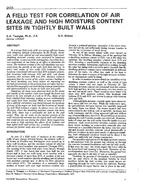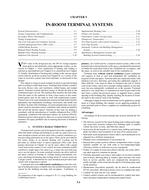A methodology is discussed to obtain global solar radiation estimates and temperature from cloud, visibility, data. Estimates are given for the absorption by water vapor and CO2. The data are further stratified by cloud groups. Results are compared with data derived from the SOLMET network and Huntsville, Alabama.
For Huntsville, synthetic monthly means stay within 3% of observed data. Our model values resemble data of the direct solar radiation in the winter months and global radiation during summer for three selected urban areas. While CO2 contributes only 1% to the absorption, water vapor absorption stays around 25% and the cloud effect reduces radiation by 10% to 20%. It appears that on overcast days with high ceiling, 50% of the solar radiation still would be available; on days with 5 to 7 eighths cloud cover, even 75% to 85%. Only on overcast days with low clouds is the amount reduced on the average to 25% to 40%.
Units: SI
Citation: Symposium, ASHRAE Transactions, 1985, vol. 91, pt. 2B, Honolulu, HI
Product Details
- Published:
- 1985
- Number of Pages:
- 14
- File Size:
- 1 file , 1000 KB
- Product Code(s):
- D-HI-85-05-3


